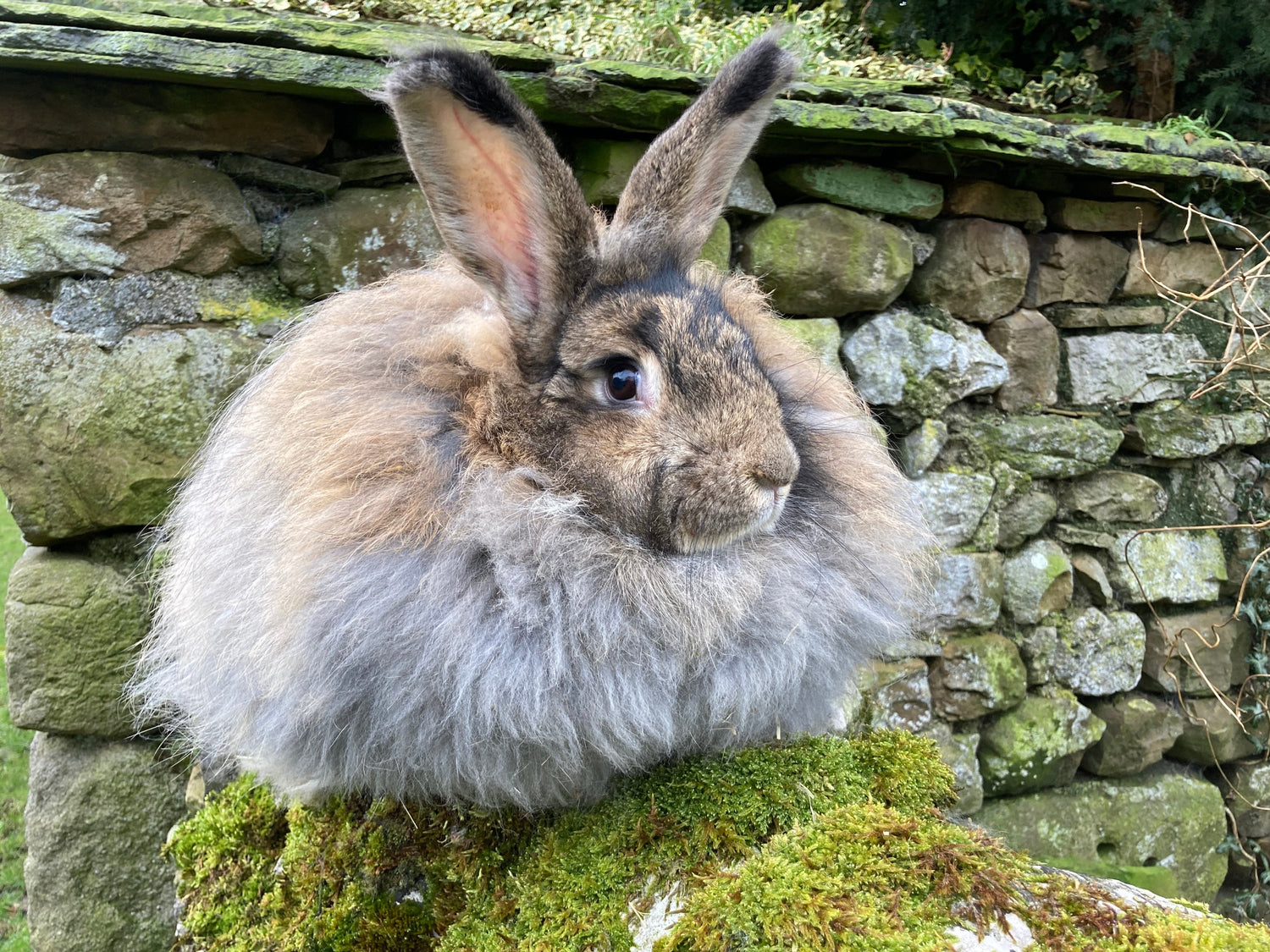Fibre Focus Friday: Angora & Bigwigs Angora

Angora is a wonderfully soft fibre which comes from Angora rabbits; it has a matt texture and has been likened to working with clouds! The origin of Angora fibre is very important as some producing countries harvest the fibre by pulling it out rather than combing or clipping. You can rest assured that we source our fibre clipped from Europe to ensure that we aren't supporting any inhumane practices.
There is a huge amount of work that goes in to keeping Angora rabbits, especially if you want to produce a high quality fibre from them. So, we've been talking to Sarah from Bigwigs Angora who has been keeping these rabbits for over 30 years - so she's a bit of an expert when it comes to husbandry and their fibre!
Bigwigs Angora was born soon after I got married in 1991. We had the tenancy of a very small farm in the Yorkshire Dales, and whilst my new husband combined farming with work as an Agricultural salesman, I wanted to develop my dream of working with fibre. I had fallen in love with angora rabbits having seen them on a television programme in 1989 and shortly afterwards found a breeder only 25 miles away who taught me everything I needed to know. I became part of a cooperative of angora fibre producers and opened a small craft shop selling our yarn and knitted garments alongside other local products. As the 1990s progressed, my time was taken up with our 4 children, my small herd of rabbits lessened and soon after our youngest child was born in 1998 we were given the opportunity to move to a much bigger farm. With regret, Bigwigs was packed away. Ten years later (2008) all the children were at secondary school and I was finding a bit of time for myself. My husband suggested I got rid of all the ‘stuff’ in our attic and having visited Woolfest, I booked a stand at Wonderwool Wales, re-packaged all my old Bigwigs stock and hoped for the best. I was overwhelmed by the response, and came home inspired. Within days, more bunnies had been bought and Bigwigs was reborn.
My herd of Angora rabbits has moved from the stone barns around the farmyard into their own purpose built shed. The new shed is light and airy with plenty of room for the rabbits to be kept in straw bedded runs on the concrete floor; the bucks are kept in individual, lidded runs and does are kept in larger runs in their family groups. I find that as-long as the runs are kept clean and dry, then the rabbits keep themselves (and each other) clean and there is very little need for grooming between clips. I should say here that the larger, continental type Angoras that I keep have a much higher proportion of guard hair in their coat which helps to keep the coat knot free. The hair grows 1” per month and needs to be clipped before the coat becomes matted at 16 – 18 weeks. I carefully harvest the fibre by hand clipping with scissors, a process which takes about an hour per rabbit. Prior to clipping the coat is brushed to remove any bits of straw, hay or dirt, this has the added benefit of relaxing the rabbit who will then doze on my knee as the hair is carefully cut. Whilst clipping, the fibre is sorted (or ‘graded’) into the best quality, longer hair suitable for spinning and clean, shorter hair suitable for felting projects.
When I started to keep Angoras in the early 1990s, we did not know about the cruelty issues found in Asia and it has always been considered acceptable and practical to keep Angora rabbits on a wire floored cage to keep the precious fibre clean and the cage well-ventilated as Angoras can be stressed by being too warm. Angoras have very fluffy feet and seem not to suffer any ill effects of a wire floor, but none the less, I experimented with keeping colonies of bunnies in large floor pens and found that whilst there was a little more fibre wasted through becoming dirty, so long as the pens were kept clean and dry, the rabbits were able keep themselves and each other very clean. I know that I am very fortunate to live on a farm where space, a supply of straw bedding and a large muck heap are readily available. I love to see my rabbits enjoying the space they have, and I know anyone who loves their rabbits will always put their animal’s welfare and happiness first.





